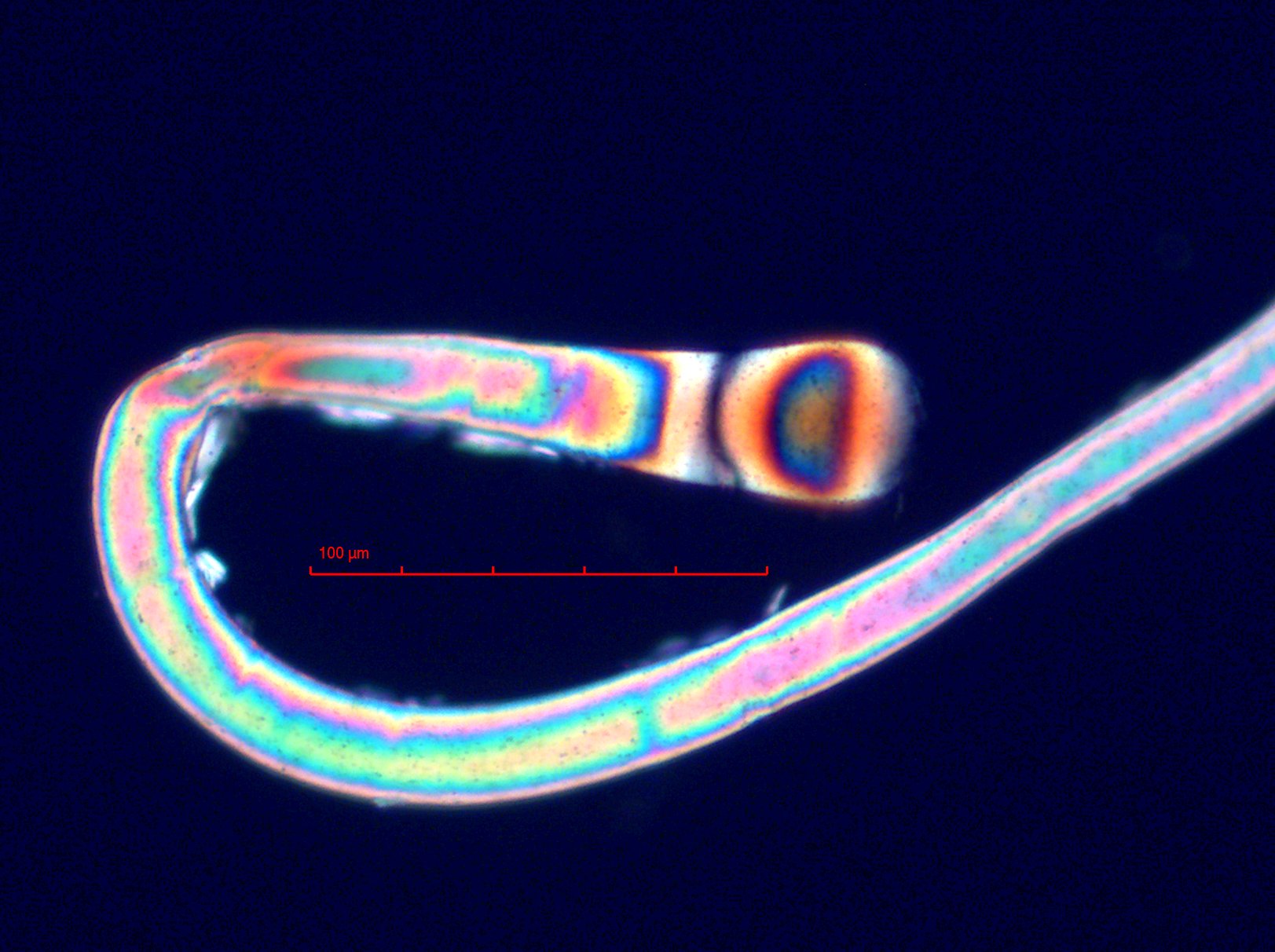Polyester Fiber
This is a sample polyester fiber Showing the melt termination. The fiber has been dyed red.
Transmitted Crossed Circular Polarized Light
http://en.wikipedia.org/wiki/Polyester
Definition/Function:
Polyester fiber is derived from terephthalic acid. It is formed into a fiber by extruding the heated polymer through a spinneret. This results in the fiber taking the cross-section of the spinneret. Polyester fiber can be round or any other desirable extruded shape.Significance in the Environment:
This is a common clothing fiber.Characteristic Features:
Polyester fiber has a refractive index along its length of about 1.71 to 1.73 and perpendicular to its length of about 1.53 to 1.54. It has a birefringence of about 0.18 and a positive sign of elongation. It tends to exhibit a smooth, regular surface along its length depending on its cross-section of the fiber. Extreme shapes, such as heptalobate types, can result in an irregular appearance along the length as the fiber twists or bends.Associated Particles:
References:
DuPont Company Techinical Bulletin X-156: IDENTIFICATION OF FIBERS IN TEXTILE MATERIALS, December 1961.http://en.wikipedia.org/wiki/Polyester


